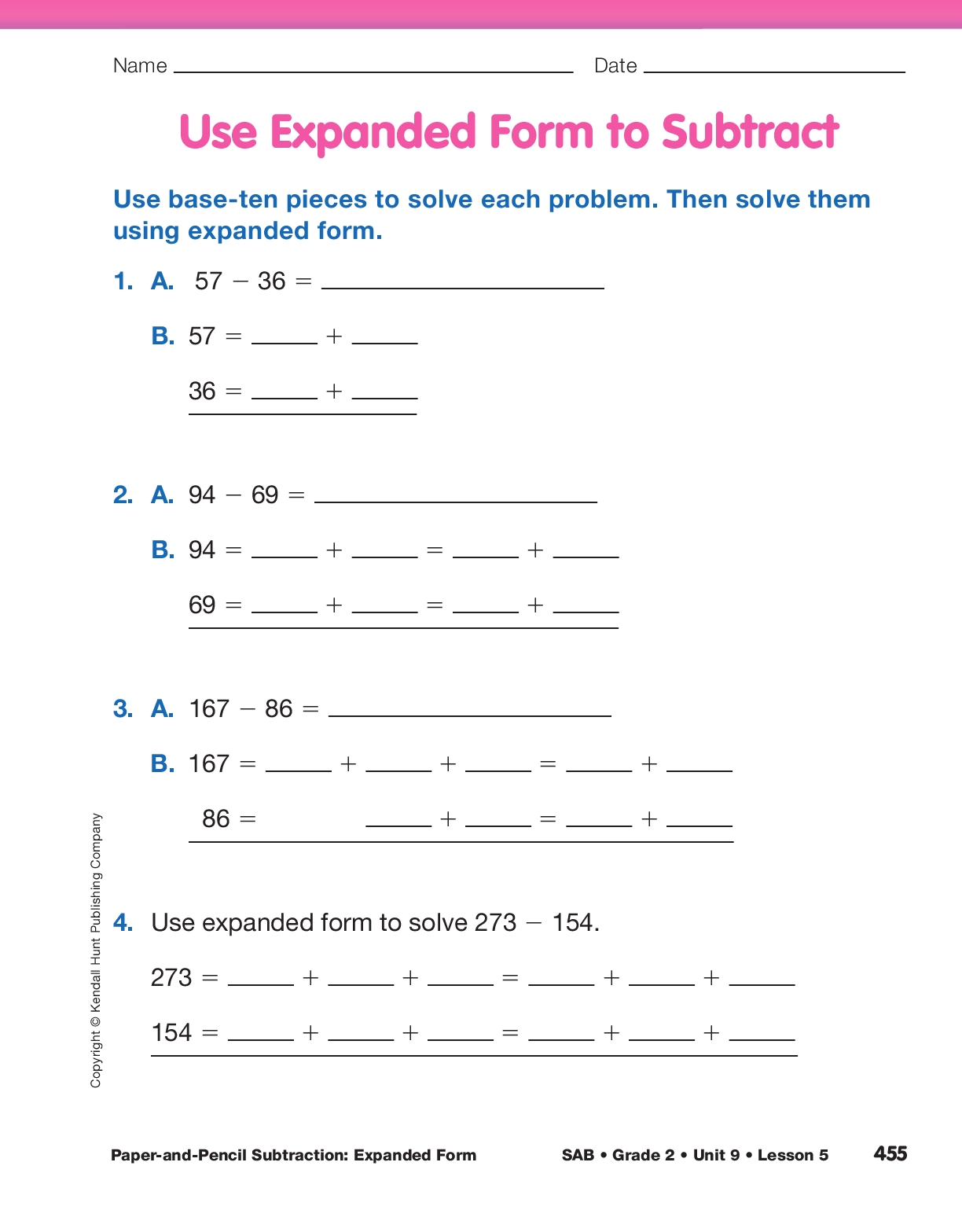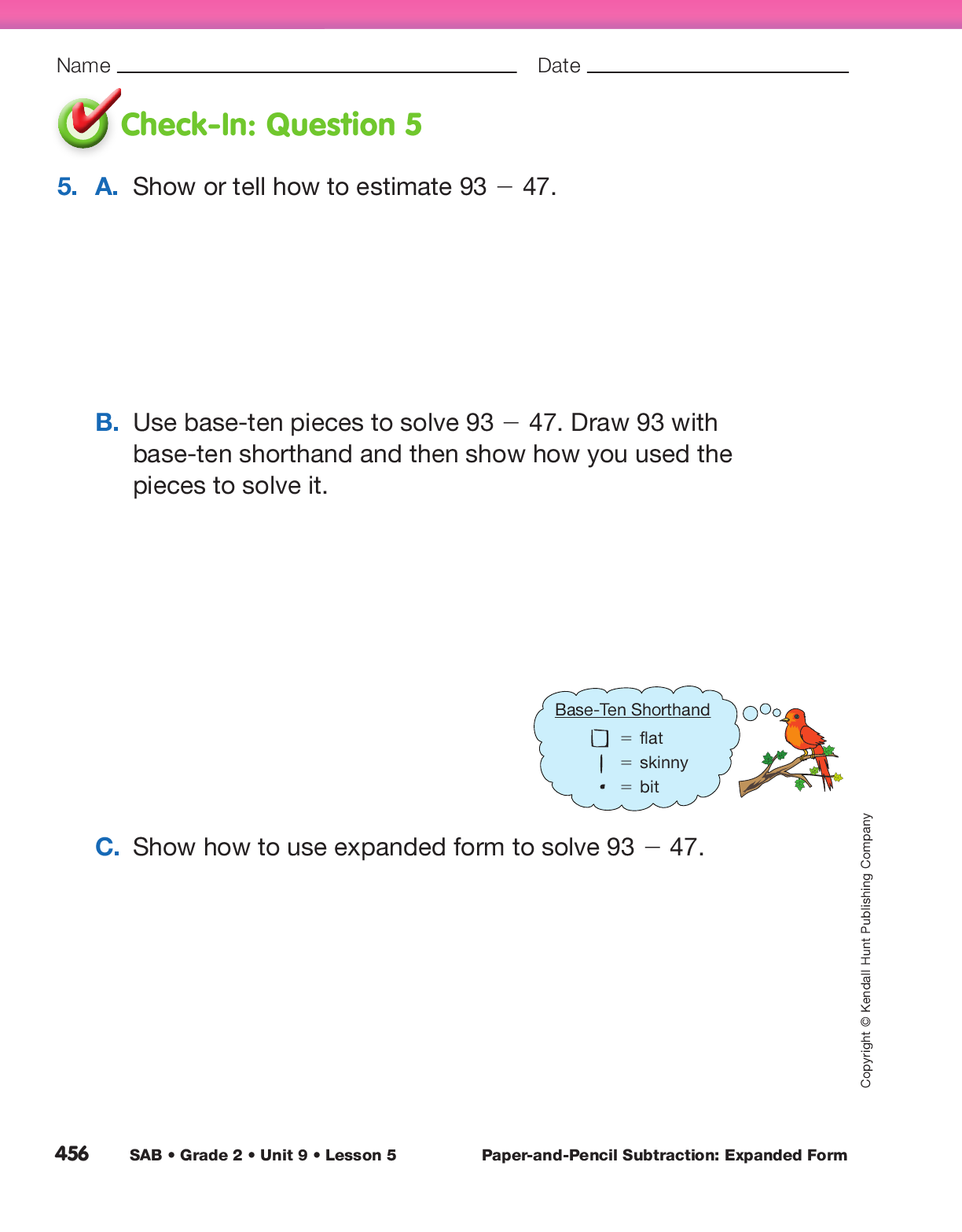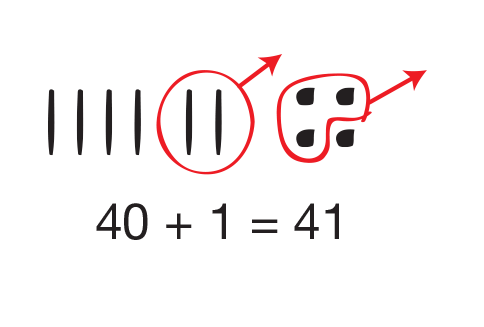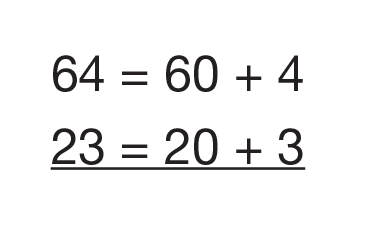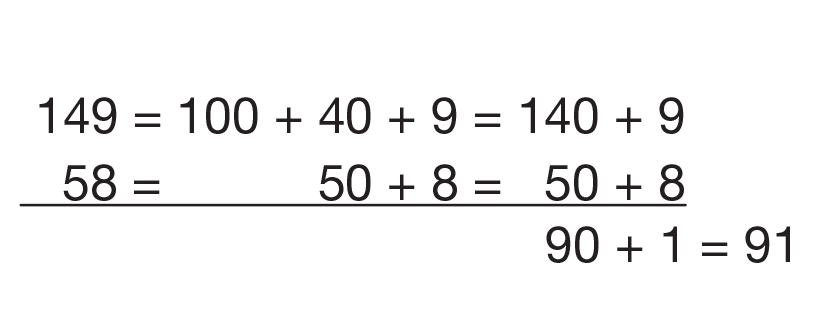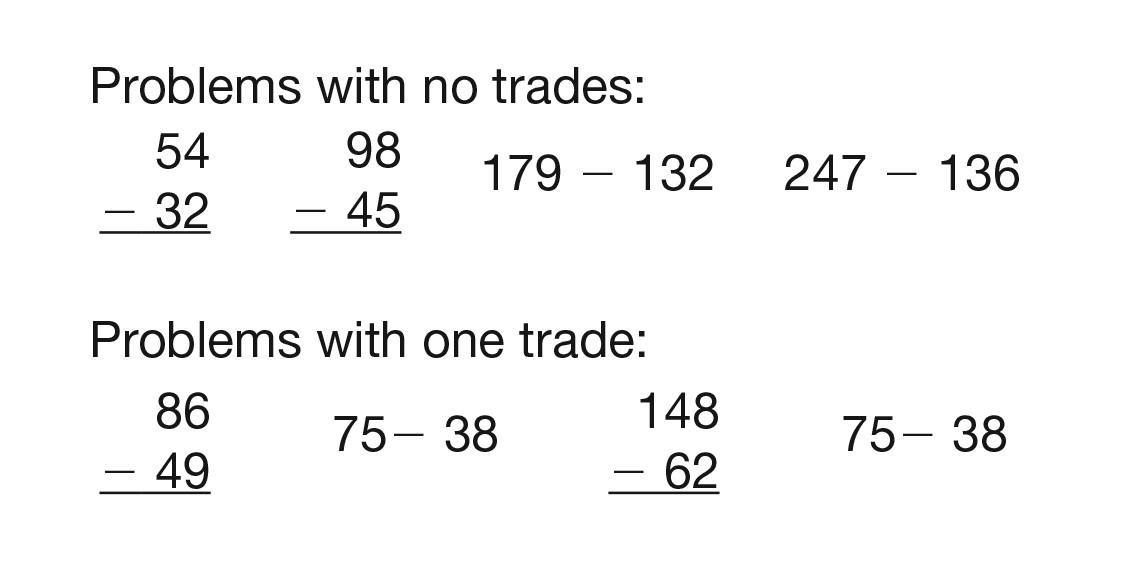Paper-and-Pencil Subtraction: Expanded Form
Est. Class Sessions: 2–3Developing the Lesson
Part 1: Connect Base-Ten Pieces to Expanded Form
Solve Subtraction Problems with No Trades. Students practiced subtraction with base-ten pieces in Lesson 4. Now you can discuss how they can use expanded form as one way to solve subtraction problems with paper-and-pencil. Remind them that they have previously used expanded form to solve addition problems. See the Content Note on expanded form addition.
Display the following problem that requires no trades, vertically:
64− 23
Ask students to estimate the difference. Then ask students to model and solve it with base-ten pieces as shown in Figure 1. When modeling subtraction ask students to place the first number in the problem, the minuend, 64. Then they should show the subtraction by taking away pieces that represent the second number, the subtrahend, 23. As students work with the base-ten pieces, be sure they do not begin the problem by laying out the pieces for both numbers.
Direct students’ attention back to the displayed problem. Ask a student volunteer to extend the notation by writing it in expanded form as shown in Figure 2.
Remind students that this is a subtraction problem. The plus signs in the problem written this way simply refer to the different ways of partitioning the numbers. This doesn’t change it from a subtraction problem. See the Content Note on expanded form subtraction. Draw students’ attention to the way the columns are aligned in this notation so that tens are subtracted from tens and ones are subtracted from ones.
Have students relate their base-ten pieces to the problem written in expanded form.
Ask:
Show the subtraction step on the problem written in expanded form. Sixty minus 20 is 40 and 4 minus 3 is 1. Subtraction in this lesson can be done in any order. Students should be allowed to choose whether they subtract the ones or the tens first.
64 = 60 + 423 = 20 + 3
40 + 1 = 41
Ask:
Solve Subtraction Problems with Trades. Display a problem such as 57 − 29, which requires a trade. Have the class estimate the difference. Then ask students to use base-ten pieces to solve it. Remind them to place 57 pieces and then to remove 29 of them. Ask a student volunteer to model the problem with display base-ten pieces, showing the trade.
Ask:
Write the problem in expanded form.
57 = 50 + 729 = 20 + 9
Ask:
Extend the written problem by writing:
57 = 50 + 7 = 40 + 1729 = 20 + 9
Ask:
Complete and display the written version of the problem.
57 = 50 + 7 = 40 + 1729 = 20 + 9 = 20 + 9
Show the subtraction step. Forty minus 20 is 20 and 17 minus 9 is 8. Complete the problem by adding 20 + 8.
57 = 50 + 7 = 40 + 1729 = 20 + 9 = 20 + 9
20 + 8 = 28
Trade 100 for 10 Tens. Work through a problem that involves trading 100 for 10 tens. Display the following problem:
149− 58
Tell students to estimate the difference, solve the problem using base-ten pieces, and then ask them to help you solve the problem using the expanded-form method. See Figure 3. Point out that you lined up the hundreds, tens, and ones. There are no hundreds in 58 so you left a space in the hundreds column.
Some students may have difficulty with the notation
when the trade for 100 is made. They may want to
add 10 to the 40 (and write 50) rather than 10 tens,
100, to the 40. This is inefficient. If students are
recording the trade inefficiently, remind them that
they are breaking the flat into 10 skinnies and adding
these
10 skinnies to the existing 4 skinnies, or
adding 100 + 40. See Figure 4 for an example of
inefficient trading.
After they have solved the problem with base-ten pieces and expanded form, ask questions that connect the base-ten pieces to the paper-and-pencil solution:
As needed, present students with a few other problems to practice. Sample problems are shown in Figure 5. Work through a problem that involves subtracting a 3-digit number from a 3-digit number making sure that students align the hundreds with the hundreds, tens with tens, and ones with ones. Display some problems horizontally and some vertically to make students comfortable seeing a problem written either way. For each problem, have students estimate the difference, solve the problem using base-ten pieces, and then solve it using expanded form notation. Remind students of Math Practices Expectation 4, Check my calculations. Tell them that solving a problem two ways, first with base-ten pieces and then with expanded form, is always a good way to check calculations.
Assign the Use Expanded Form to Subtract pages in the Student Activity Book. Students will solve problems using base-ten pieces and expanded form. Some of the problems involve 1 trade.
Assign the Expanded Form Subtraction Practice Homework Masters after Part 1 of this lesson.















